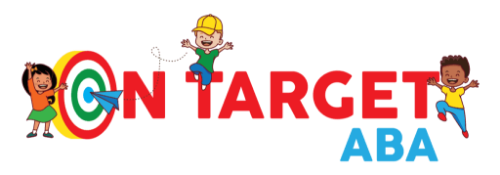🧠 AI Summary:
This guide helps parents understand what happens during the autism diagnosis process — from early screenings and developmental evaluations to next steps after diagnosis. It provides reassurance, clarity, and helpful tips for preparing emotionally and practically. It also highlights how ABA therapy begins after diagnosis to help families move forward with confidence.
When You First Begin to Wonder
Every parent notices things at their own pace. Maybe your child isn’t speaking as much as others their age, avoids eye contact, or becomes upset with certain sounds or changes in routine. These small moments can lead to a big question:
💭 “Could my child be on the autism spectrum?”
The thought can feel overwhelming — but taking the first step toward understanding is the best thing you can do. Learning about the autism diagnosis process gives you clarity, direction, and the power to help your child grow with confidence.
At On Target ABA, we walk beside families through every step, from screening and testing to beginning therapy once the diagnosis is confirmed.
Step 1: Early Developmental Screening
Your journey usually begins with a simple developmental screening during a well-child visit. Most pediatricians use screening tools at 18 and 24 months, but you can request one anytime if you have concerns.
A screening might include:
- A short questionnaire about your child’s communication and social behaviors
- Observation by your pediatrician
- Questions about milestones like speech, play, and movement
This is not a diagnosis — it’s a way to see if your child might benefit from further evaluation.
According to the CDC’s “Learn the Signs. Act Early.” initiative, parents are encouraged to monitor milestones and seek early screening whenever they have concerns.
If results suggest developmental differences, your pediatrician will refer you for a comprehensive autism evaluation.
Step 2: Autism Testing and Developmental Assessment
A full autism diagnostic assessment goes beyond observation. It’s a structured, evidence-based process that helps professionals understand your child’s strengths and challenges.
Depending on your provider, the assessment may include:
- Standardized testing tools (like the ADOS-2 or CARS)
- Parent interviews about developmental history
- Direct observation of play, social interaction, and communication
- Cognitive and language testing
The goal is to identify not just whether your child meets criteria for autism, but how to best support their learning and daily living skills.
Many families search for “autism testing for toddlers” — and yes, children as young as 18 months can be accurately evaluated with the right tools and specialists.
Step 3: Receiving the Diagnosis
After the assessment, you’ll meet with your clinician to review results and receive a written report. This report may include:
- The diagnosis (if criteria are met)
- Summary of testing results
- Recommendations for therapies and next steps
It’s completely normal to have mixed emotions at this stage — relief, worry, or even confusion. Remember: a diagnosis doesn’t define your child. It’s a guide to help them thrive with the right support.
At On Target ABA, many parents share that once they received clarity, they finally felt hopeful. With a clear diagnosis, you can begin accessing ABA therapy, speech therapy, or occupational therapy — all proven to help children on the spectrum grow and connect.
Step 4: Starting the ABA Evaluation
Once you have your diagnosis report, the next step is scheduling an ABA evaluation with a Board Certified Behavior Analyst (BCBA).
At On Target ABA, this includes:
1️⃣ Reviewing your child’s diagnostic report
2️⃣ Observing play and communication
3️⃣ Identifying skill gaps and behavioral strengths
4️⃣ Building a personalized treatment plan
This process also serves as your insurance pre-authorization step. Most providers, including Medicaid, require this assessment before approving services.
💡 You can learn more about this process in our detailed guide on Medicaid ABA Therapy.
Step 5: Understanding Your Insurance Coverage
One of the most common parent concerns is cost — but here’s some good news:
Most insurance plans, including Medicaid, cover ABA therapy once an autism diagnosis is confirmed.
You’ll typically need to provide:
- A copy of your diagnosis report
- Your insurance card
- A doctor’s referral (for some plans)
The On Target ABA intake team helps families verify benefits, submit authorizations, and get started quickly — often within days of diagnosis.
“Families shouldn’t have to navigate paperwork alone,” says one of our intake coordinators. “We’re here to make the process easy and stress-free.”
How to Prepare for Your Child’s Autism Evaluation
Here are a few ways to make the process smoother:
✅ Write down your concerns. Bring notes about what you’ve observed at home or in daycare.
✅ Gather documentation. This may include past assessments, medical records, or preschool progress notes.
✅ Ask questions. You have every right to understand what each part of the evaluation means.
✅ Bring comfort items. A favorite toy or snack can help your child feel at ease.
Remember, clinicians are there to help — not judge. They want to understand your child’s unique profile so they can make the best recommendations possible.
After the Diagnosis: What Comes Next
Once your child is officially diagnosed, you’ll have several options for support. The most common next steps include:
- ABA Therapy: Focuses on building communication, learning, and daily living skills through positive reinforcement.
- Speech Therapy: Improves language, articulation, and comprehension.
- Occupational Therapy: Supports sensory needs, motor skills, and independence.
- Parent Coaching: Helps families reinforce progress at home.
You don’t need to start everything at once — your BCBA or developmental specialist will help prioritize which services to begin first.
Learn how ABA helps children transition from diagnosis to growth in our blog, Does My Child Need ABA Therapy or Something Else?.
The Emotional Side of Diagnosis
It’s okay to feel emotional — many parents describe the autism diagnosis process as both eye-opening and overwhelming.
You may feel sadness, relief, or uncertainty about the future. These feelings are completely normal. What matters most is what comes next: turning answers into action.
At On Target ABA, we remind parents that a diagnosis is not an ending — it’s a starting line. It opens the door to support, understanding, and progress that can transform your child’s everyday life. 💙
How On Target ABA Supports Families
When your child is newly diagnosed, you shouldn’t have to navigate everything alone. That’s why we’re here.
Our team provides:
- Guidance during the evaluation process
- Free insurance verification
- Comprehensive ABA assessments
- Parent training to help reinforce learning at home
- Therapy locations designed for comfort and engagement
We proudly serve families in:
Our mission is simple: to help every child reach their full potential, and every parent feel supported through every stage of the journey.
Final Thoughts: Clarity Brings Confidence
Taking the first step toward evaluation is one of the most powerful choices you can make for your child.
The autism diagnosis process isn’t something to fear — it’s the start of understanding your child better and giving them the tools they need to thrive.
No matter where you are in your journey, On Target ABA is here to help you move forward with compassion, expertise, and hope. 🌈

